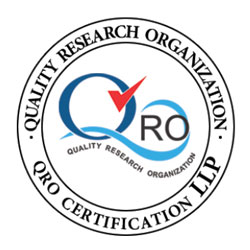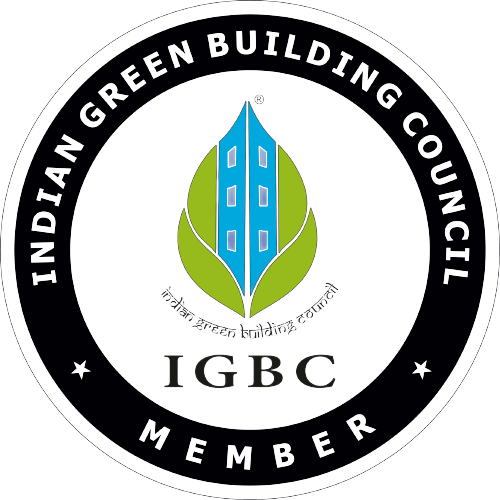AAC Blocks
Environmental Impact of OJAS AAC Blocks
AAC blocks are made from natural, environmentally stable materials like lime, cement, and silica sand. The process begins by adding water to a mixture of cement and lime, triggering a chemical reaction known as hydration. This reaction causes the mixture to expand and become aerated. The expansion results in a porous structure, creating a lightweight aggregate that is ideal for construction purposes, such as walls and floors. The materials used in AAC blocks are not significantly affected by environmental conditions, making them a durable and sustainable choice for construction.
AAC Blocks
Environmental Impact of OJAS AAC Blocks
AAC blocks are generally considered more environmentally friendly than traditional building materials like bricks.
Reduced Carbon Footprint
Resource Conservation
Energy Efficiency
Durability and Longevity
Sustainable Architecture
Global Temperature Rise
Eco-Building
Eco Emissions

AAC BLocks
Build Project with Environmental Material
- Eco-Friendly Building
- Green Construction
- Environmental Warming
- Carbon Impact

Eco-Friendly Building
By eco-friendly building, we mean enhancing the efficiency of resources used in construction and on-site operations while minimizing the potential negative effects of real estate development on human health and the environment. This is achieved through better planning, design, construction, operation, and maintenance. There are various definitions of 'Eco-Friendly Building.' To us, it means reducing the environmental impact of construction to the greatest extent possible, while ensuring cost-effectiveness, comfort, and long-term durability. Let's explore the potential to transform real estate development into truly "Eco-Friendly" building practices with OJAS Buildcorn Autoclaved Aerated Concrete (AAC) blocks – an eco-conscious alternative.

Green Construction
With growing global awareness of the concept of "Green Construction," builders, architects, and engineers are now focused on creating buildings designed to minimize the overall impact of the built environment on both human health and the natural environment by:
- Efficiently utilizing energy, water, and other resources.
- Reducing waste, pollution, and environmental harm.
- Implement erosion and sedimentation control measures to reduce negative impacts on water and air quality.
- Ensure that fundamental building elements and systems are designed, installed, and calibrated to operate as intended.
- Establish the minimum level of energy efficiency for the proposed building and its systems.
- Set minimum indoor air quality (IAQ) standards to prevent indoor air quality problems, enhancing the comfort and well-being of occupants.
- Minimize exposure of building occupants, indoor surfaces, and ventilation systems to Environmental Tobacco Smoke (ETS).

Environmental Warming
An increasing phenomenon in today's world, the effects of environmental warming are visible for all to see, with the construction industry being a major contributor. Environmental warming refers to the rise in the Earth's temperature due to the increased emission of greenhouse gases. The overuse of air conditioning, industrial pollution, and deforestation are key factors driving this warming. Unplanned design and construction materials used in building projects lead to excessive energy consumption. Additionally, traditional building materials cause topsoil erosion, permanently reducing the land's agricultural potential.
- Reduce reliance on air conditioning.
- Opt for eco-friendly housing solutions.
- Plan and grow more trees around your home.
- Design construction projects to minimize equipment and energy usage.
- Reduce the consumption of fossil fuels.
- Use stairs instead of elevators whenever possible.
- Choose lightweight organic materials over synthetic ones, as they not only require less energy to produce but also help lower electricity costs in the long run.

Carbon Impact
The increasing carbon impact on the environment is a growing concern. The carbon impact of OJAS Buildcorn AAC blocks is significantly lower compared to traditional walling materials (per square foot carbon levels: AAC blocks 2.13 kg of CO2, clay bricks 17.6 kg of CO2, concrete walls 14 kg of CO2). Additionally, the lightweight nature of OJAS Buildcorn AAC blocks further reduces carbon emissions, as more cubic meters can be transported per truckload compared to traditional walling materials (3 truckloads of traditional material in cubic meters equals 1 truckload of AAC blocks in cubic meters).
Lower energy consumption
The manufacturing process for AAC blocks typically requires less energy compared to brick production, resulting in a lower carbon footprint.
Reduced transportation emissions
AAC blocks are often produced closer to construction sites, reducing the need for long-distance transportation and associated emissions.
Use of recycled materials
Some AAC block manufacturers incorporate recycled materials like fly ash into their production process, further reducing the environmental impact.
Reduced deforestation
AAC blocks are a manufactured product, unlike traditional bricks that often require the extraction of clay from natural resources, potentially contributing to deforestation.
Improved insulation
AAC blocks have excellent insulation properties, helping to reduce energy consumption in buildings. This can lead to lower heating and cooling costs and a smaller carbon footprint for building occupants.
Longer lifespan
Some AAC block manufacturers incorporate recycled materials like fly ash into their production process, further reducing the environmental impact.
Reduced reliance on fossil fuels
By reducing energy consumption, AAC blocks can help to reduce reliance on fossil fuels for heating and cooling.
High Compressive Strength
AAC blocks have a high compressive strength, allowing them to withstand significant loads and maintain structural integrity over time.
Need high-quality AAC blocks for your construction project?
Natural protection
AAC blocks are naturally resistant to pests such as termites, preventing damage to the building structure.

Minimal upkeep
AAC blocks require minimal maintenance after installation. They do not need painting or sealing, reducing long-term costs.









